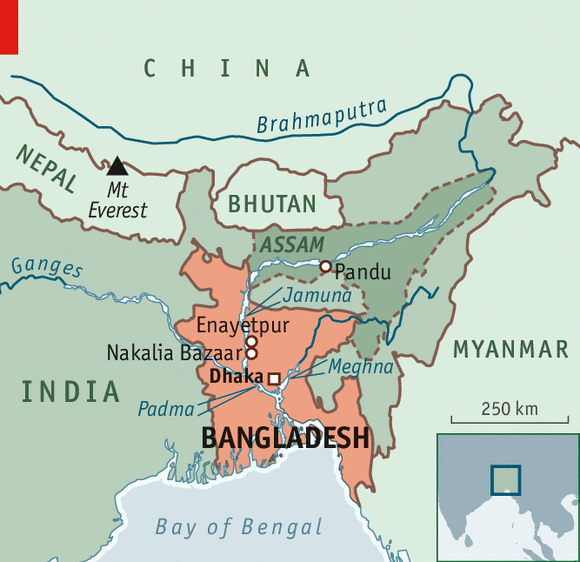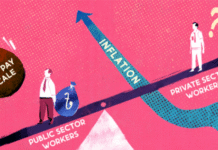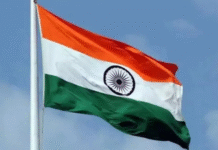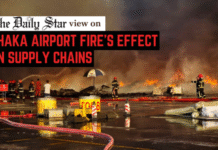At last, Bangladesh starts to tame the mighty Brahmaputra
A MAN-MADE spur juts into the mighty Jamuna river—known as the Brahmaputra upstream, over the border in India—near the town of Enayetpur. The solid wall was built, expensively, to control the massive flow of the river. But erosion now eats deep into its foundations and the river is reclaiming the land once again. Last year people lived beside it in makeshift shacks; now where their homes once stood there is only water.
The great river draws from a huge, heavily populated basin, home to hundreds of millions of people. Over the centuries they have learned to live with the shifting course of the river, and with its immense flow. At its peak, some 100,000 cubic metres of water rush by every second, enough to fill 144,000 Olympic-sized swimming pools per hour. But that flow can be terribly destructive, alternately depositing huge quantities of sediment—hundreds of millions of tonnes a year—then devouring the land elsewhere.
This year the river will swallow another 1,300 hectares (3,200 acres) of land, predicts Maminul Haque Sarker of the Centre for Environmental and Geographic Information Services (CEGIS) in Dhaka, Bangladesh’s capital. Scientists say that 64,000 people in Bangladesh are displaced each year by the erosion of riverbanks. Many pushed from their homes by the river end up in slums in the capital. “The landlord in the morning can become a beggar by evening,” goes a traditional song. “This is the game of the river.”
The cost of restraining its flow with stone spurs and other constructions used to be prohibitive as well as ineffective: it cost about $20m to protect a kilometre of embankment, using stones trucked in from India and paid for in hard currency. Now a relatively simple solution is being tried to protect millions who live near the river. Some 25km (16 miles) downstream from the spur is Nakalia Bazaar, which offers a strikingly different scene to Enayetpur. A big riverside market contains permanent structures. From huts atop a protected embankment comes the clicking sound of fly-shuttles worked through handlooms. The economic activity is a sign that, locally, the game of the river has changed and its power has been reduced.
Here the riverbank is protected by low-tech means: heavy sandbags. Filling and installing them is labour intensive, but workers are abundant and cheap. Sand is also plentiful. Thus overall costs are low: some $2m per kilometre. Since around 1,000km of banks along the river probably need protection, the difference in cost is immense.
Some environmentalists suggest it may be better, at least beyond towns, to let the river go where it wants than attempt to wrestle with such a powerful monster. But armies of donors, consultants and development experts have been determined to fight, for the sake of those who survive on the river’s edge.
Prospects for the sandbag campaign are looking up. The government at least has started to share information with local people, warning about imminent threats of erosion. Along the river, a red flag placed in the ground means there is a high risk of erosion, a yellow flag warns people that they still have time but to be prepared. Now the Asian Development Bank (ADB) and the World Bank have promised $1.5 billion to stabilise 150km of embankments along the Jamuna and the Padma rivers.
The simple bagging technique used in Bangladesh could next be adopted across the border in India, which has plenty of fertile land to protect in its eastern provinces. In nearby Assam state, the chief minister, Tarun Gogoi, has suggested India is ten years behind Bangladesh in “training” its part of the river and that his country has much to learn.
Rivers narrow and widen, depending on the flow of sediment, and even as a result of earthquakes that can dramatically shift their course. Experts say the effects of one earthquake in Assam in 1950 were still being felt four decades later. Today much of the river in Bangladesh is 12km wide, but Mr Sarker, the scientist from CEGIS, says with sediment flow declining, the river could narrow again to just 6km. Nothing will be permanent, but more stability may yet beckon for the people whose lives have for years been defined by the river.
Source: The Economist (Print Edition)










